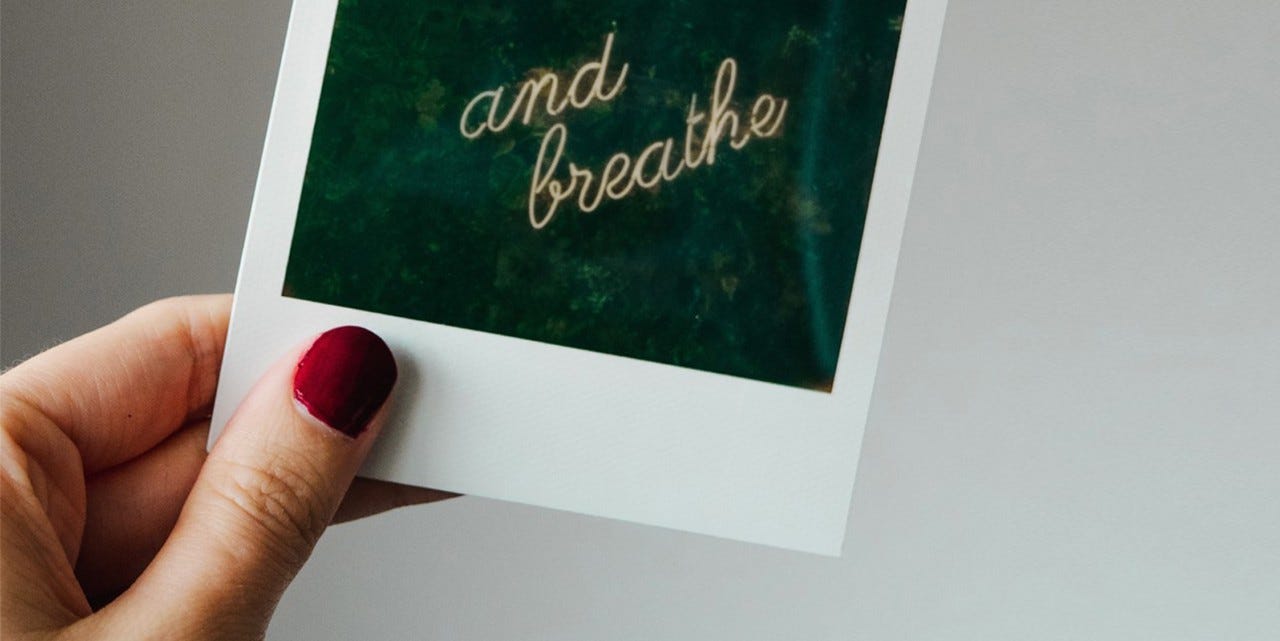No stress Breathing exercises for relaxation
Breathe in. Breathe out. And you’ll feel the stress slip away. You always have the easiest way to relax to hand.

Is it possible to breathe stress away? It really can be that easy. At least as a stop-gap solution. If you’re stressed and tense, you tend to take quick and shallow breaths. By contrast, you take deep and slow breaths when your body is relaxed.
In other words, how you breathe says a lot about your physical and mental well-being. Our use of language also testifies to this: If someone “takes our breath away”, it means we’re in awe of that person or impressed by something. If we suggest someone needs to take a deep breath, we’re advising them to calm down and think about what they’re doing. And if our breath “catches in our throat”, we’re surprised or scared.
Most of the time we breathe automatically without thinking about the process. However, unlike other bodily functions such as our heart beat and digestion, we can also consciously control our breathing. And this is the key to breathing exercises.
What are the effects of breathing exercises?
Managing stress through breathing is not esoteric hocus-pocus, but is related to the functioning of the autonomic nervous system. Put simply, within this system we have the sympathetic nerve, which is responsible for tension, and the parasympathetic nerve, which governs relaxation.
The sympathetic nerve is activated when we’re excited, nervous and stressed. The body is preparing itself to perform at its best, which means that our heart beat speeds up and our breathing becomes faster and shallower. In a state of relaxation the body recovers, the heart beats more slowly, breathing becomes calmer and deeper.
This bodily-controlled reaction can also be brought about at will: Taking deep and calm breaths, focusing in particular on exhaling, signals to the body to calm down and lowers stress levels.
Breathing exercises for relaxation
The good news is that It is easy to relax with breathing techniques. Often it’s enough to repeat the exercises a couple of times a day.
Choose one or two of the following exercises that appeal to you and make you feel good. Don’t force your breathing. It should always flow without strain. When doing the exercises: Sit on a chair with your back straight and place your feet flat on the floor in parallel to each other. Relax your arms and shoulders. Breathe slowly.
Abdominal breathing
Many people today no longer know how to breathe from the abdomen and only breathe superficially in the chest. This exercise makes conscious use of the diaphragm and fills the lungs completely with oxygen.
- Place a hand on your stomach.
- Breathe in slowly and deeply through your nose and feel how your stomach curves outwards.
- Let the breath escape out through your mouth or nose without pushing with your stomach. Your stomach retracts.
- For greater relaxation, breathe out for longer than you breathe in.
- A breath cycle should last around 10 seconds.
- Repeat the exercise at least 10 times.
Speech breathing
- Breathe in slowly and deeply through your nose.
- Breathe out through your mouth and make a hoisting sound: Ssssss ... The resistance prolongs the out breath.
- The quieter the ssssss, the slower the exhalation.
- A breath cycle should last around 10 seconds.
- Repeat the exercise at least 10 times.
4610 (4711)
The name of this breathing exercise describes the length of the inhalation and exhalation and the number of repetitions: Breathe in for 4 seconds, breathe out for 6 seconds, repeat 10 times. If you can remember the number 4711 better because of the brand name of an eau de cologne, simply amend the exercise.
- Breathe in through your nose for 4 seconds.
- Breathe out through your nose for 6 seconds.
- Repeat the exercise 10 times.
Four-square breathing (box breathing)
In this breathing exercise, the inhalation, exhalation and pause are of equal length. Adjust the length of the breath as you like. Over time, you can extend the breaths and pauses.
- Breathe in through your nose for 4 seconds.
- Hold your breath for 4 seconds.
- Breathe out through your nose for 4 seconds.
- Hold your breath for 4 seconds.
- Repeat the exercise at least 10 times.
Alternate nostril breathing
- Bring your right hand up to your nose and use the thumb to close the right nostril.
- Breathe in slowly through the left nostril.
- Hold your breath for a moment, then use your index finger to close the left nostril.
- Release the right nostril and breathe out through it slowly.
- Now breathe in again through the right nostril.
- Hold your breath for a moment and then close the right nostril.
- Open the left nostril and breathe out through it slowly.
- Repeat the exercise at least 10 times.
Counting the breath cycles has a positive side effect, It helps you focus on the individual rounds and stops you from thinking about your next appointment.


